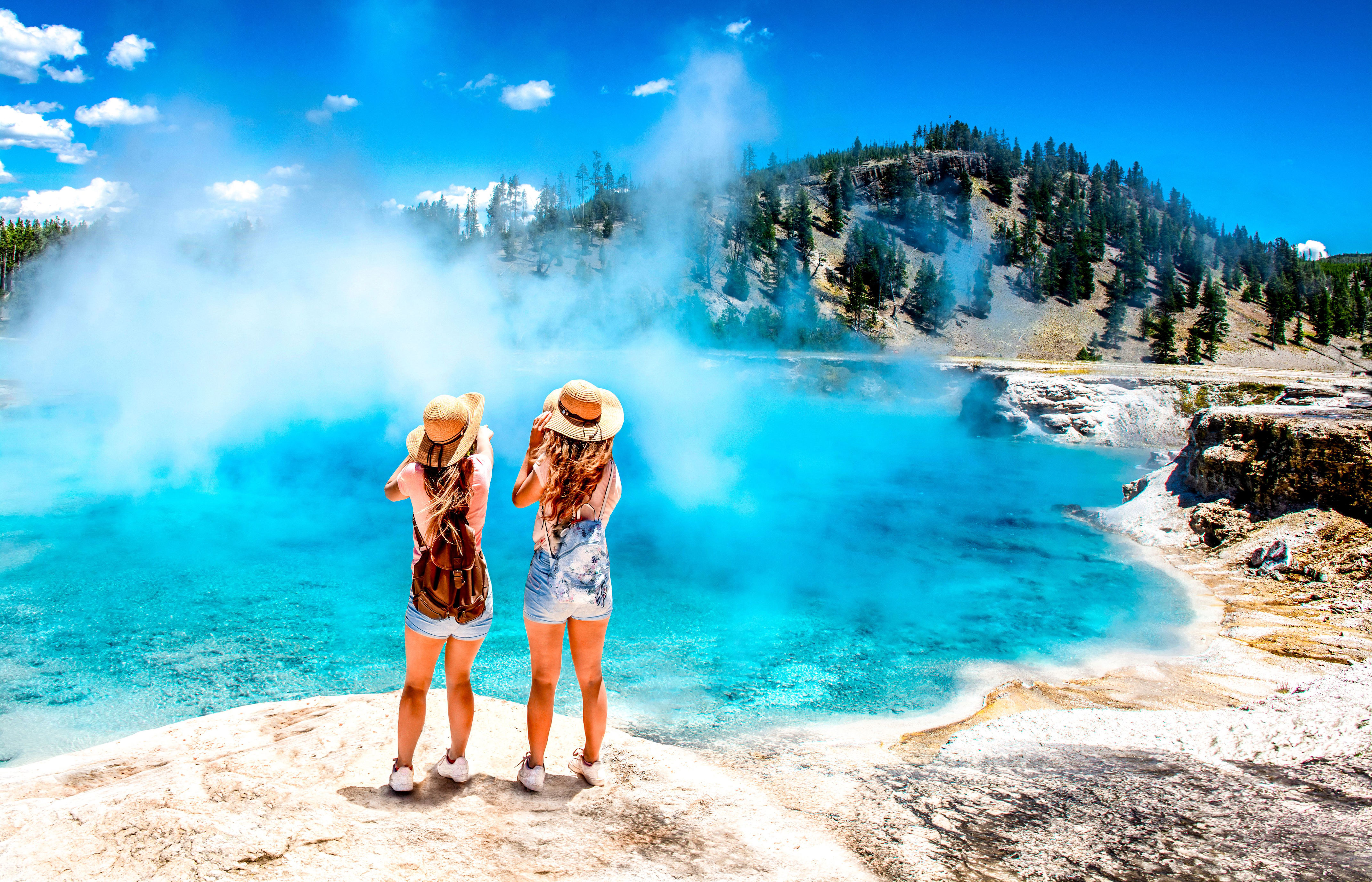Glacier or Yellowstone: Which National Park Wins as the Most Beautiful?

Overview of Glacier and Yellowstone National Parks
While beauty is in the eye of the beholder, the breathtaking scenery of America's national parks is undeniable. Among the most beautiful national parks in the United States are Montana’s Glacier National Park and Wyoming’s Yellowstone National Park, located approximately 400 miles apart. Both parks feature stunning natural landscapes, including vast alpine forests, towering mountains, rushing rivers, and shimmering lakes. The Rocky Mountains run through both parks, connecting them for millions of years.
Glacier National Park
Glacier National Park spans over one million acres of pristine alpine ecosystem in northwestern Montana, situated on the Canada–United States border. Known as the "Crown of the Continent," it serves as the headwaters for drainage basins that flow into three major watersheds: the Pacific Ocean, the Hudson Bay, and the Gulf of Mexico. The park's unique geographic location, combined with its majestic mountain scenery, rivers of ice, and massive glaciers, earned it its nickname, coined by George Bird Grinnell in 1885 when he described the region’s glaciers as resembling jewels set in a crown.
Yellowstone National Park
Yellowstone National Park is located in the northwest corner of Wyoming, with small portions extending into Montana and Idaho. Established in 1872, it was the first national park in the United States and the world's first. Spanning 2.2 million acres, Yellowstone shares similar alpine topography with Glacier National Park but also features unique hydrothermal and geological features. Given their proximity and similar landscapes, it's often debated which park is more beautiful.
Geographical Features & Scenic Highlights
Both parks offer a wealth of geographical features. Yellowstone is known as a hydrothermal paradise, home to half of the world’s geothermal features, including over 10,000 geysers, hot springs, and mudpots. The volcanic activity beneath the park has created these features, as it sits atop a massive supervolcano with a caldera. Evidence of this activity includes lava fields and other geological formations.
One of Yellowstone’s most famous attractions is the Grand Canyon of the Yellowstone, characterized by vibrant yellow, orange, and red rock formations. This canyon, along with its stunning waterfalls, was formed by the Yellowstone River, the longest undammed river in the contiguous United States.
In contrast, Glacier National Park is not among the sixteen park units designated by the National Park Service (NPS) for significant geothermal features. Instead, its defining characteristics are its glaciers and glacial formations. The Kootenai Tribe referred to the area as Ya-qawiswit̓xuki, meaning "the place where there is a lot of ice." In 1850, the region had around 80 glaciers, but only about 26 remain today.
Glaciers continue to shape the landscape, creating U-shaped valleys, patterned lakes, cirques, arêtes, horns, and hanging valleys. Lake McDonald, the largest lake in Glacier National Park, was primarily formed by glacial activity during the last Ice Age. Another notable feature is the Lewis Overthrust, a geologic thrust fault that exposes colorful rocks dating back 1.4 billion years.
Wildlife & Recreation
Glacier National Park supports a wide range of wildlife, including grizzly bears, mountain goats, bighorn sheep, moose, lynx, and snowy owls. The park is home to 276 bird species, 71 mammal species, and nearly 2,000 plant species, according to the NPS. Popular spots for wildlife viewing include Many Glacier Valley, Logan Pass, and various hiking trails.
Yellowstone is also rich in biodiversity, hosting black bears, gray wolves, elk, American martens, and mountain lions. The park is renowned for its American bison, the only place where bison have lived continuously since prehistoric times. Yellowstone is home to nearly 300 bird species, 67 mammal species, and 16 fish species, according to the NPS.
Both parks offer a variety of outdoor recreation opportunities. Glacier National Park features 734 miles of hiking trails, over 700 lakes for boating or fishing, and 1,000 camping sites. The Going-to-the-Sun Road connects the east and west sides of the park and is a must-see attraction. Winter activities like skiing, snowboarding, and snowshoeing are also available.
Yellowstone offers 1,100 miles of hiking trails, skiing in the Rocky Mountains, and unique experiences such as horseback riding, geyser viewing, and cultural events at the Yellowstone Tribal Heritage Center.
Stargazing and Accessibility
Both parks are ideal for stargazing due to minimal light pollution and high elevation. Glacier National Park is designated as an International Dark Sky Park, offering exceptional night sky views. Yellowstone, while not officially recognized, is also a great spot for stargazing, with occasional sightings of the Northern Lights.
In terms of accessibility, both parks provide accessible parking, trails, and facilities, including shuttle services. Yellowstone has also constructed wheelchair-accessible walkways at key attractions like Old Faithful and the Grand Prismatic Spring.
Final Thoughts
The stunning natural beauty, abundant wildlife, and recreational opportunities make Glacier and Yellowstone National Parks two of the most popular in the United States. While Glacier receives fewer visitors than Yellowstone, both parks remain bustling, especially during the summer.
Ultimately, determining which park is more beautiful is subjective. Glacier represents the icy forces of nature, while Yellowstone showcases the geothermal activities that shape the Earth. In a metaphorical sense, they embody the eternal dance of ice and fire. Whether Glacier or Yellowstone is considered more beautiful depends on individual preferences.
Post a Comment for "Glacier or Yellowstone: Which National Park Wins as the Most Beautiful?"
Post a Comment